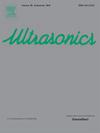超声诱导血脑屏障打开和硒纳米颗粒注射降低癫痫发作活动:颞叶癫痫小鼠模型
IF 3.8
2区 物理与天体物理
Q1 ACOUSTICS
引用次数: 0
摘要
背景:考虑到目前耐药内侧颞叶癫痫(MTLE)治疗方案的局限性,开发新型、非烧蚀性和微创手术技术至关重要。目的与方法在本研究中,低强度脉冲超声(LIPU)和微泡诱导的血脑屏障(BBB)打开联合硒纳米颗粒(SeNP)静脉注射于小鼠内侧颞叶模型中,优化后者在kainic acid (KA) MTLE小鼠模型中脑癫痫组织的生物利用度。我们的目的是通过长期颅内脑电图视频记录,评估lipu增强SeNP递送对ka诱导癫痫发作的安全性和抗癫痫潜力,并评估小鼠海马组织中的神经炎症、星形胶质增生、神经元凋亡和神经发生。首先,我们确定SeNP静脉注射联合lipu诱导的血脑屏障破坏是实现高且持续的脑硒水平的最有效方法。这种治疗的安全性在三次治疗后被证明,间隔一周,没有观察到不良反应。我们的研究结果进一步显示,与假药对照组相比,LIPU + SeNPs治疗的KA小鼠癫痫发作频率显著降低(- 90%,P = 0.001)。在联合治疗后,观察到短期和长期组织学变化,包括海马门部异常神经发生减少,整个海马神经元死亡减少,海马小胶质细胞激活减少,这些可能共同有助于观察到的抗癫痫作用。结论senp注射联合lipu诱导的血脑卒中破坏具有降低MTLE癫痫发作活动的潜力;然而,统计比较并不能最终确定其优于单独的senp。进一步的调查是必要的,以考虑在人类的转化研究。本文章由计算机程序翻译,如有差异,请以英文原文为准。
Ultrasound-induced blood–brain barrier opening and selenium-nanoparticle injection lower seizure activity: A mouse model of temporal lobe epilepsy
Background
Given the limitations of current treatment options for drug-resistant mesial temporal lobe epilepsy (MTLE), the development of novel, nonablative and minimally invasive surgical techniques is essential.
Objective and Methods
In this study, low-intensity pulsed ultrasound (LIPU)- and microbubble-induced (henceforth LIPU) blood–brain barrier (BBB) opening combined with selenium-nanoparticle (SeNP) intravenous injection in a mouse model of mesial temporal lobe optimized the latter’s bioavailability in the brain epileptic tissue of the kainic acid (KA) mouse model of MTLE. We aimed to assess the safety and antiepileptic potential of LIPU-enhanced SeNP delivery against KA-induced seizures using long-term intracranial electroencephalogram video recordings and evaluating neuroinflammation, astrogliosis, neuronal apoptosis and neurogenesis in the hippocampal tissues of mice.
Results
First, we established that SeNP intravenous injection combined with LIPU-induced BBB disruption was the most effective method to achieve high and sustained selenium levels in the brain. The safety of this treatment was demonstrated after three treatment sessions, 1-week apart, with no adverse effects observed. Our results further showed a significantly lower frequency of epileptic seizures (–90 %, P = 0.001) in KA mice treated with LIPU + SeNPs compared to sham-treated controls. Short- and long-term histological changes were seen after that combined regimen, including less aberrant neurogenesis in the hippocampus hilum, less neuronal death throughout the hippocampus and less hippocampal microglial activation, which might collectively contribute to the observed antiseizure effect.
Conclusion
SeNP injection combined with LIPU-induced BBB disruption demonstrated potential as a promising approach to reduce seizure activity in MTLE; however, statistical comparison did not conclusively establish superiority over SeNPs alone. Further investigations are necessary to consider translational studies in humans.
求助全文
通过发布文献求助,成功后即可免费获取论文全文。
去求助
来源期刊

Ultrasonics
医学-核医学
CiteScore
7.60
自引率
19.00%
发文量
186
审稿时长
3.9 months
期刊介绍:
Ultrasonics is the only internationally established journal which covers the entire field of ultrasound research and technology and all its many applications. Ultrasonics contains a variety of sections to keep readers fully informed and up-to-date on the whole spectrum of research and development throughout the world. Ultrasonics publishes papers of exceptional quality and of relevance to both academia and industry. Manuscripts in which ultrasonics is a central issue and not simply an incidental tool or minor issue, are welcomed.
As well as top quality original research papers and review articles by world renowned experts, Ultrasonics also regularly features short communications, a calendar of forthcoming events and special issues dedicated to topical subjects.
 求助内容:
求助内容: 应助结果提醒方式:
应助结果提醒方式:


